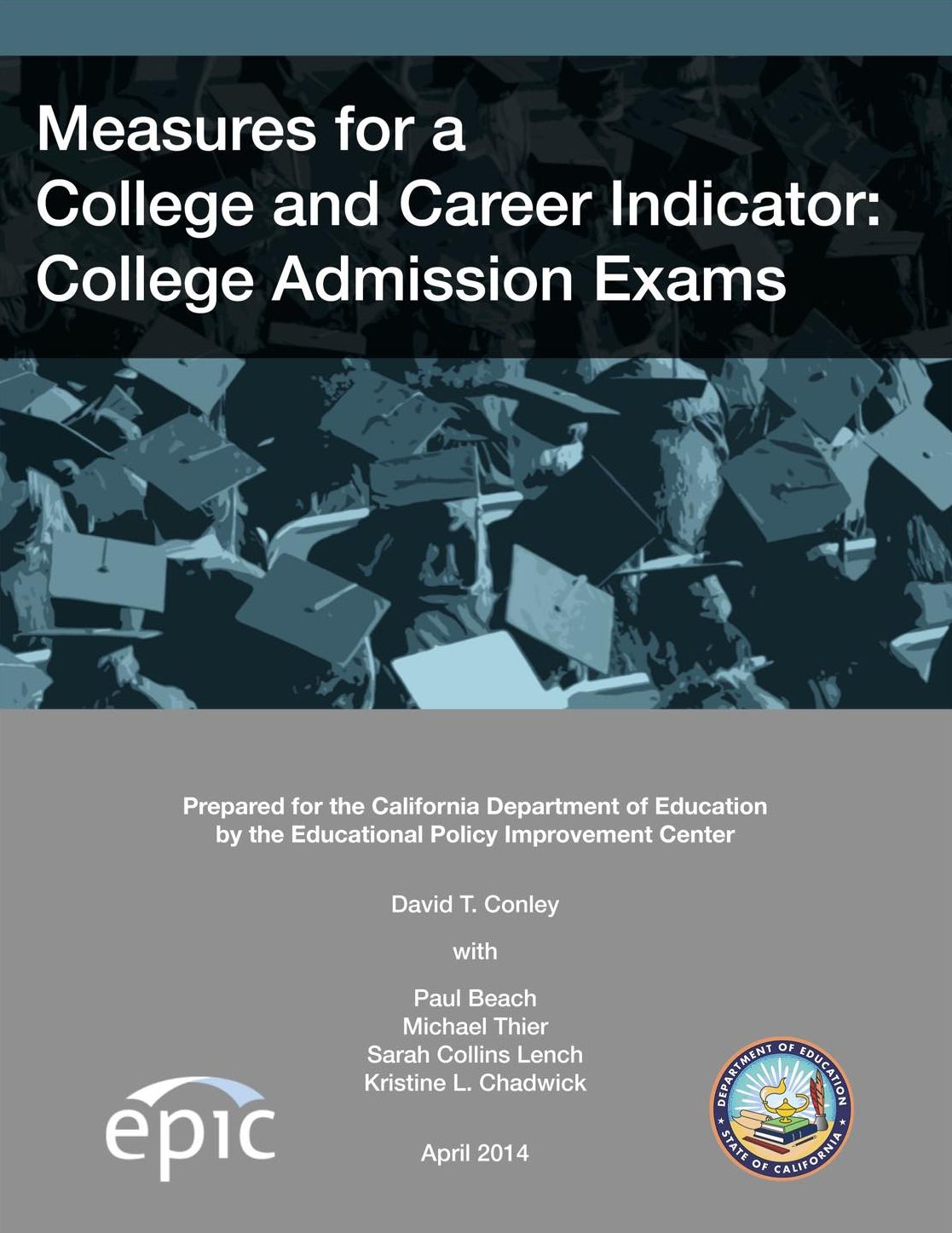This white paper considers college admission exams—specifically the SAT® and ACT®—as potential measures to be included in California’s college and career indicator. The paper begins by presenting a brief overview of the two exams, their respective histories, and their current applications to other state accountability systems. Next, the SAT and ACT are evaluated against the framework being used for all five categories of potential college and career preparedness measures. This white paper concludes with a summary that identifies major strengths, weaknesses, and trade-offs.
CCIndicator-CollegeAdmissionExams.pdf (2666 downloads )From the Summary:
The SAT and ACT predict postsecondary success with a few caveats. Researchers and policymakers should be sensitive to the effects of school and demographic factors. When significant variables including socioeconomic status, race, family income, gender, and sample size are controlled for in study designs, the relationships between the SAT/ACT and postsecondary success is not as strong across schools and subgroups of students. Comparisons across schools need to be made with great caution when these variables are not controlled for. Likewise, the differential effects of student opportunity factors should be controlled for in order to make fair comparisons across schools. Tables 1, 2, and 3 summarize the evaluative criteria ratings.
The stability of the SAT and ACT is one of the strong points of these measures. The redesign completed by the College Board for 2005 was motivated in large measure by critiques of the exam by then-president of the UC System Richard Atkinson, which demonstrates a responsiveness to California policy concerns. The more recent redesign demonstrates responsiveness to potential changes in teaching and learning heralded by the Common Core. This type of adaptation over time, closely monitored and researched, helps these exams be more valid and more stable than many other measures.
For students, these exams contain currency because they are used to meet a college admissions requirement, though not all postsecondary institutions require an SAT or ACT score. The score is most relevant for students planning to attend four-year institutions.
Finally, SAT and ACT scores are reasonably understandable by students and parents, although school or district reports may be more potentially problematic and challenging to interpret properly. The cost of this measure mostly falls on the student, who is responsible for preparing for, taking, and managing the score reports generated by the exam. The California Department of Education will incur some cost from ordering, aggregating, analyzing, and generating the data used to hold high schools accountable.
Authors: David Conley, Paul Beach, Michael Thier, Sarah Collins Lench, Kristine Chadwick




